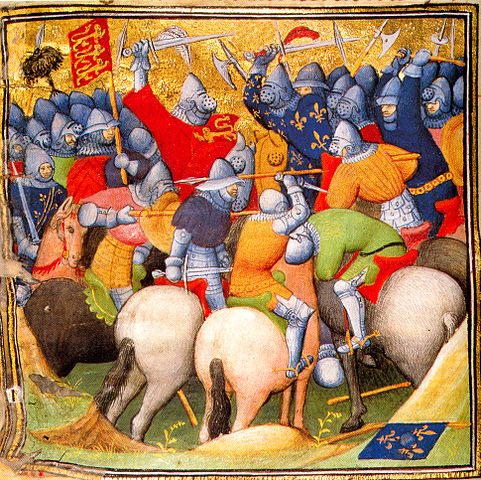Middle Ages vs Medieval Ages
Is there a distinction between Middle Ages and Medieval Ages? You might have pondered this when you hear the terms Middle Ages and Medieval Ages. Even if you are not someone with extensive knowledge about history, you must recognize that both these terms refer to historical periods in European history. To be completely clear, let us phrase it like this: there is no difference between the two historical periods Middle Ages and Medieval Ages. They both refer to the same time period. However, you will be interested to know that, word-wise, there exists a small difference between the two terms, Middle Ages and Medieval Ages. All these factors will be covered in this article.
What is Middle Ages? What is Medieval Ages?
First of all, Middle Ages and Medieval Ages refer to the same historical period. The period between the Fall of Rome and the Renaissance is often referred to as the Middle Ages. It is roughly between 476 AD to 1600 AD. It is interesting to note that Middle Ages is divided by historians into three smaller periods. These smaller periods are the Early Middle Ages, the High Middle Ages, and the Late Middle Ages. The fall of the Roman Empire and the invasion of the Romans by the Germans mark the Early Middle Ages. In fact, the Early Middle Ages saw a few other invasions too. Some of these invasions include the invasion of the English by the Angles and the Saxons, northern France by Vikings, and the Ostrogoths by the Lombards in Italy.
The High Middle Ages started probably from 1000 AD. One can very well see the formation of England, France, and Germany around 1066, after the Norman Conquest. The Roman Empire suffered further setbacks during this period. England and France suffered a lot as a consequence of what is called the Hundred Years’ War between them during the late Middle Ages.
There were weaker kingdoms in the western half of the Roman Empire around the beginning of the Middle Ages. In fact, many regions were divided into small fragments during the period. Charles the Great built a massive kingdom, which included almost all parts of western and central Europe. This particular period is called by the name Carolingian Renaissance.
Meanwhile, the empire founded by Charles the Great did not survive his death. Its major territories, namely, East and West Francia became the modern countries of France and Germany. What really happened was that West Francia became the modern France. East Francia became the Holy Roman Empire. It later flourished as the modern state of Germany.
Thus, the formation of Rome and its empire was represented by the Middle Ages. Even the formation of East Francia was represented by the Medieval Ages. It is interesting to note that Medieval Ages is also called by the name Medieval Times. In fact, the term Middle Ages was coined as early as the 15th century AD. Renaissance scholarship flourished in the Middle Ages. The Medieval Times saw a development in cultural relationships.
Then, when we consider the two terms, there is a small difference between Middle Ages and Medieval. Middle Ages is the noun form, while Medieval is the adjective form of the same word. That is why when you are referring to a building built during the Middle Ages, you call it a medieval building.
What is the difference between Middle Ages and Medieval Ages?
• According to historical periods, there is no difference between Middle Ages and Medieval Ages.
• During the Middle Ages, many differences took place in Europe. There were many wars, such as The Hundred Years’ War. Kingdoms were built and destroyed. The Church became more powerful. There were religious wars.
• Middle Ages is the noun form, while Medieval is the adjective form of the same word.
Images Courtesy: Battle of Crécy via Wikicommons (Public Domain)
Related posts:
Difference Between Middle Ages and Dark Ages
Difference Between Dark Ages and Medieval Ages
